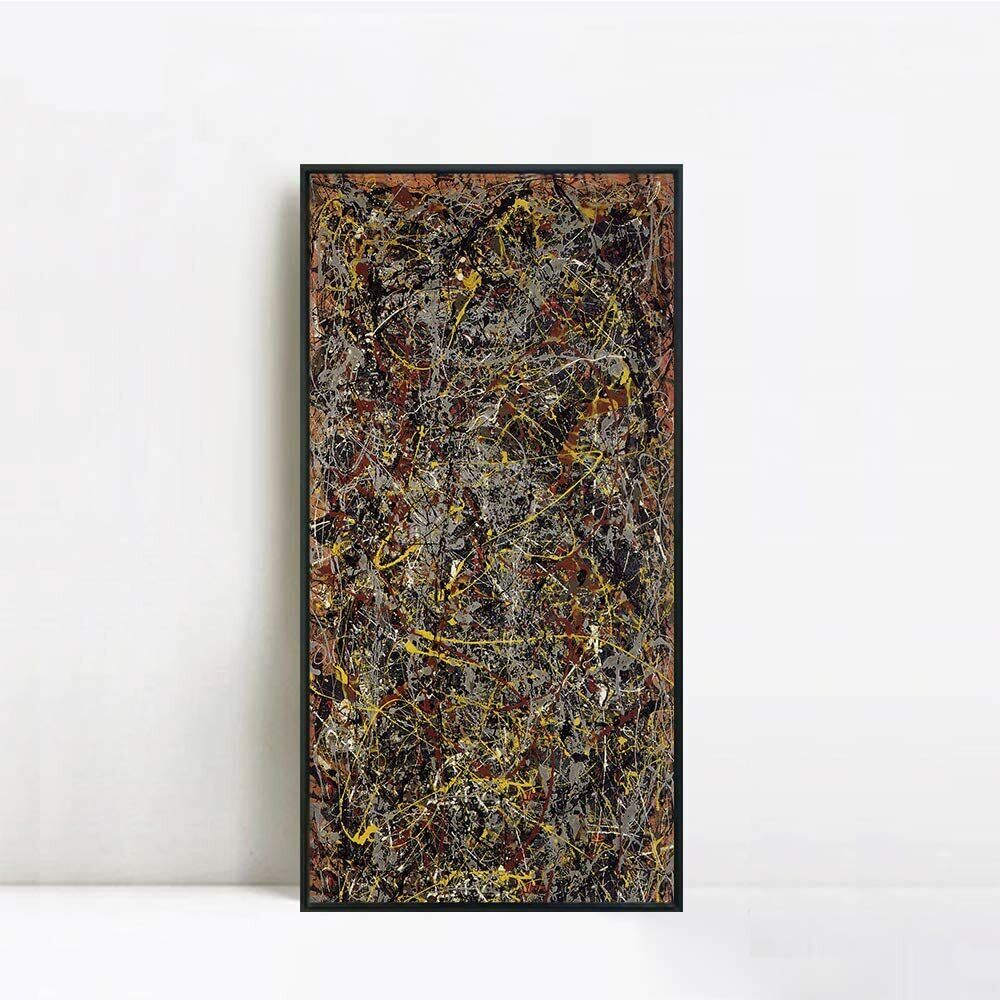
Jackson Pollock – No. 5, 1948: Groundbreaking Abstract Painting of the Drip Technique
Jackson Pollock’s No. 5, 1948 is one of the most celebrated and controversial works of the Abstract Expressionist movement. Measuring over eight feet in height and four feet in width, the painting is a dense web of dripped, splattered, and layered paint, creating a visual rhythm that is both chaotic and intensely ordered.
Pollock pioneered his “drip technique” in the late 1940s, abandoning the easel and instead working with canvases laid flat on the floor. This allowed him to move around the work, applying enamel paint with sticks, hardened brushes, and even directly from the can. In No. 5, 1948, shades of gray, brown, yellow, and white intertwine in intricate layers, forming a complex surface that invites the eye to wander endlessly without finding a focal point.
For Pollock, the act of painting was as important as the final product. His physical engagement with the canvas—walking, bending, and moving in every direction—transformed painting into a performance. This method aligned with the Abstract Expressionist belief that art should be a direct expression of the artist’s inner state, free from premeditated composition.
No. 5, 1948 became famous not only for its innovative style but also for its place in the art market; it has been cited as one of the most expensive paintings ever sold. Beyond its monetary value, it remains a landmark in 20th-century art, redefining what painting could be and how it could be created.
Join our latest collection
